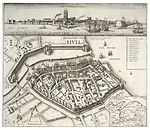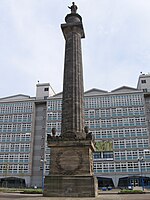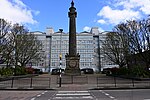Guildhall, Kingston upon Hull
Buildings and structures in Kingston upon HullCity and town halls in the East Riding of YorkshireGovernment buildings completed in 1914Grade II* listed buildings in the East Riding of YorkshireUse British English from April 2022

The Guildhall is a building on Alfred Gelder Street in the City of Kingston upon Hull, East Riding of Yorkshire, England. The building is currently the headquarters of Hull City Council but is also used as a venue for conferences, civic receptions and formal dinners. It is a Grade II* listed building status.
Excerpt from the Wikipedia article Guildhall, Kingston upon Hull (License: CC BY-SA 3.0, Authors, Images).Guildhall, Kingston upon Hull
Alfred Gelder Street, Hull Old Town
Geographical coordinates (GPS) Address External links Nearby Places Show on map
Geographical coordinates (GPS)
| Latitude | Longitude |
|---|---|
| N 53.74443 ° | E -0.33328 ° |
Address
The Guildhall
Alfred Gelder Street
HU1 2AA Hull, Old Town
England, United Kingdom
Open on Google Maps








